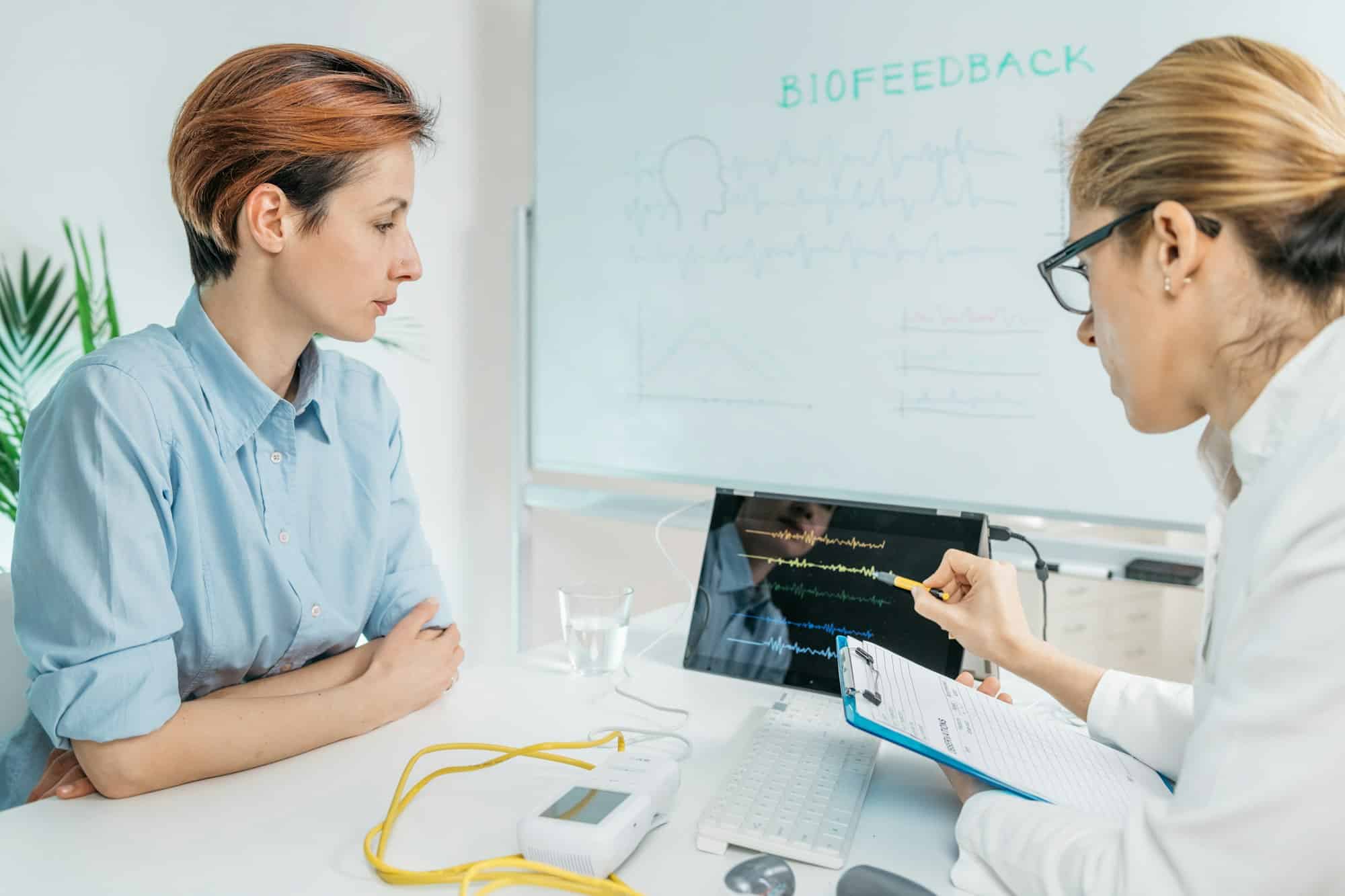Can Biofeedback Therapy Enhance Rehabilitation Outcomes for Stroke Patients with Partial Paralysis?

Biofeedback therapy, a non-invasive technique used to train patients to control their own physiological functions, has been gaining attention in recent years. This innovative therapeutic approach has been exploited in various medical fields, including neurology, psychology, and rehabilitation. One area where biofeedback therapy may hold significant potential is in the rehabilitation of stroke patients with partial paralysis. This article aims to explore the question, can biofeedback therapy enhance rehabilitation outcomes for stroke patients with partial paralysis?
Biofeedback Therapy: An Overview
Before delving into the specific application of biofeedback therapy for stroke patients with partial paralysis, it’s essential to understand what biofeedback therapy is, how it works, and its potential benefits in a rehabilitation context.
A lire également : What Are the Long-Term Effects of Blue Light Exposure from Digital Devices on Ocular Health?
Biofeedback therapy utilizes sensors and visual or auditory feedback to help patients become aware of, and eventually control, their physiological functions. This can include heart rate, blood pressure, muscle tension, and brainwave patterns. By gaining control over these functions, patients can potentially alleviate symptoms of a variety of conditions.
In a rehabilitation context, biofeedback could allow patients to regain control over impaired bodily functions more quickly and effectively. For example, a patient might use biofeedback to recognize when their muscles are becoming overly tense, and learn strategies to relax those muscles on command.
Avez-vous vu cela : What Are the Health Benefits of Nordic Walking for People with Chronic Lower Back Pain?
The Stroke Patient and Partial Paralysis
Stroke, a leading cause of serious long-term disability, often results in partial paralysis for the survivors. This condition, also known as hemiparesis, affects the movement and strength of the body’s one side, impacting the quality of life drastically.
A substantial number of stroke patients experience functional impairments, including difficulty with movement and balance. These impairments can lead to a decreased ability to perform daily activities and participate in social activities, increasing the risk of secondary health issues such as depression and physical deconditioning.
Increasingly, rehabilitation professionals are looking for innovative ways to improve motor function in stroke patients with partial paralysis. And that’s where biofeedback therapy comes in.
Role of Biofeedback Therapy in Stroke Rehabilitation
Biofeedback therapy may offer a promising approach to enhance rehabilitation outcomes for stroke patients with partial paralysis. By providing real-time feedback about muscle activity and motor performance, biofeedback can help these patients regain control over their impaired bodily functions.
As patients learn to interpret the feedback, they can make adjustments to their movement to improve their function. This active involvement in the rehabilitation process may facilitate neuroplastic changes, potentially leading to improved motor function and overall recovery.
Biofeedback therapy can be applied to various aspects of stroke rehabilitation. For instance, in gait training, biofeedback can provide input about weight distribution, helping patients to adjust their body alignment and improve their walking pattern.
Additionally, biofeedback can be used in upper limb rehabilitation. By providing feedback on muscle activation patterns, it can help patients learn how to move their affected arm more efficiently, leading to improved function and independence.
Clinical Evidence Supporting Biofeedback Therapy
Numerous clinical studies have investigated the efficacy of biofeedback therapy in stroke rehabilitation. A meta-analysis published in the Journal of NeuroEngineering and Rehabilitation reviewed the results of several clinical trials and found that biofeedback can bring about significant improvements in lower limb function in stroke patients.
In another study, researchers used a biofeedback-based virtual reality system for upper limb training in stroke patients. They found that patients receiving biofeedback therapy showed significant improvements in upper limb function compared to those receiving conventional therapy.
Emerging evidence also suggests that biofeedback therapy may enhance the effectiveness of traditional therapy by increasing patient engagement and motivation. In a study published in the Journal of Neurophysiology, patients reported greater satisfaction with treatments that included biofeedback, suggesting that it may improve adherence to therapy, a critical factor in recovery.
Future Directions and Potential Challenges for Biofeedback Therapy
While research supports the use of biofeedback therapy in stroke rehabilitation, several challenges remain. These include the need for further high-quality studies to establish optimal protocols for biofeedback therapy and to identify the patient groups most likely to benefit.
Integrating biofeedback therapy into mainstream clinical practice also requires addressing practical considerations such as cost and accessibility. Currently, biofeedback equipment can be expensive, and the technology may not be available in all rehabilitation settings.
Additionally, training and education for both clinicians and patients in the use of biofeedback equipment are crucial. Effective utilization of biofeedback depends upon the user’s ability to understand and interpret the feedback.
Despite these challenges, the future for biofeedback in stroke rehabilitation looks promising. With further research and the advancement of technologies, biofeedback therapy may become an integral part of rehabilitation for stroke patients with partial paralysis. Ultimately, the goal is to enhance rehabilitation outcomes, improving the quality of life for stroke survivors.
Biofeedback Therapy and Patient Autonomy
Biofeedback therapy not only provides physical benefits to stroke patients with partial paralysis, but it also promotes a sense of autonomy and self-efficacy. This aspect of therapy can be particularly beneficial for stroke survivors.
When a stroke occurs, it can lead to a significant loss of control over bodily functions. This loss can be profoundly disempowering. Biofeedback therapy, by its very nature, helps to restore some control to the patient. As patients learn to interpret and adjust their physiological responses based on the feedback, they begin to regain a sense of control over their bodies.
This sense of self-efficacy can be a powerful motivator, encouraging patients to engage more fully in their rehabilitation. Engagement is crucial to recovery. The more a patient is willing and able to participate actively in their rehabilitation, the better their potential outcomes.
Furthermore, biofeedback provides an objective measure of progress. Stroke patients can see in real-time the improvements they’re making, no matter how small. This visibility of progress can reinforce motivation and commitment to therapy.
Despite the promising potential of biofeedback therapy, it should be remembered that it is not a standalone treatment. It is a tool to be used in conjunction with other rehabilitation strategies such as physiotherapy, occupational therapy, and cognitive behavioral therapy.
Conclusion
The use of biofeedback therapy in the rehabilitation of stroke patients with partial paralysis is an innovative approach with significant potential. Current clinical evidence suggests that biofeedback can enhance motor function and overall recovery outcomes, offering stroke survivors a greater chance of regaining independence and improving their quality of life.
Moreover, biofeedback therapy promotes patient autonomy and engagement, essential factors for successful rehabilitation. However, while the current research is promising, further studies are needed to establish optimal protocols for the use of biofeedback in stroke rehabilitation.
There are practical considerations, such as cost and accessibility, that need to be addressed before biofeedback can be fully integrated into mainstream clinical practice. Training and education for clinicians and patients in the use of biofeedback equipment are also crucial.
Despite these challenges, the future of biofeedback therapy in stroke rehabilitation looks promising. With further research, technological advancements, and a focus on patient-centred care, biofeedback could become an integral part of rehabilitation protocols for stroke patients with partial paralysis. This innovative approach has the potential to transform the way we approach stroke rehabilitation, ultimately improving the quality of life for survivors.
